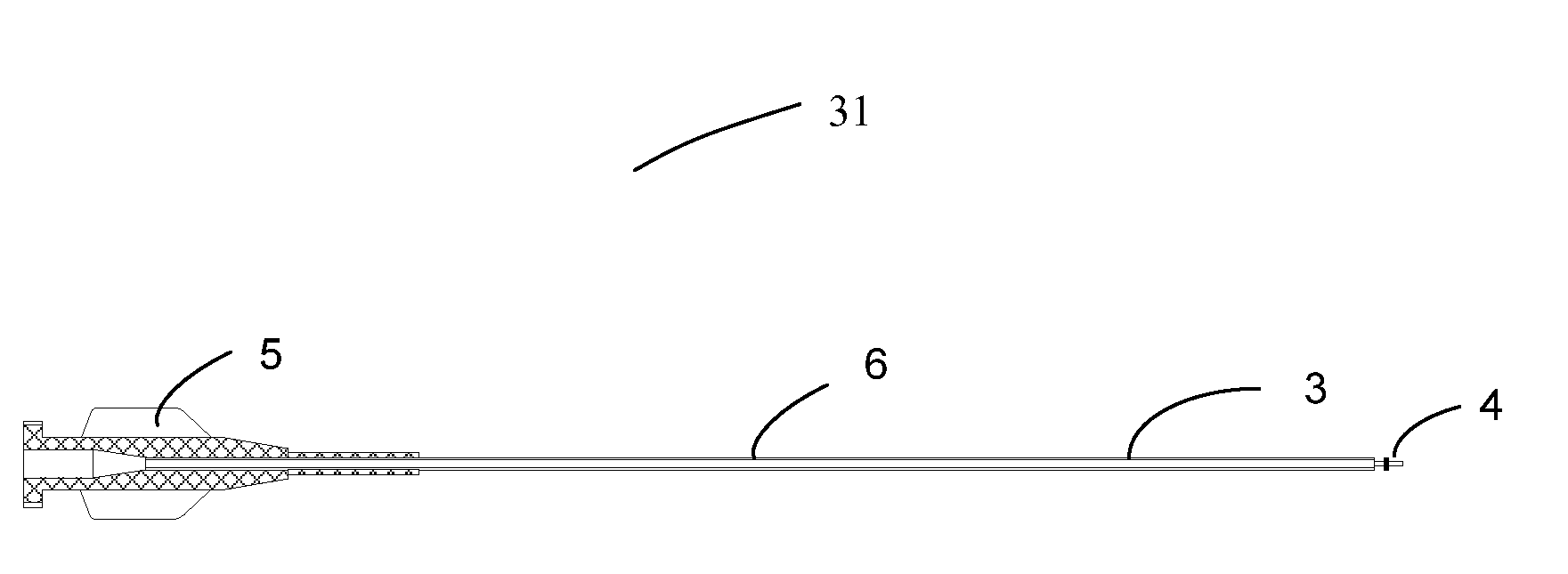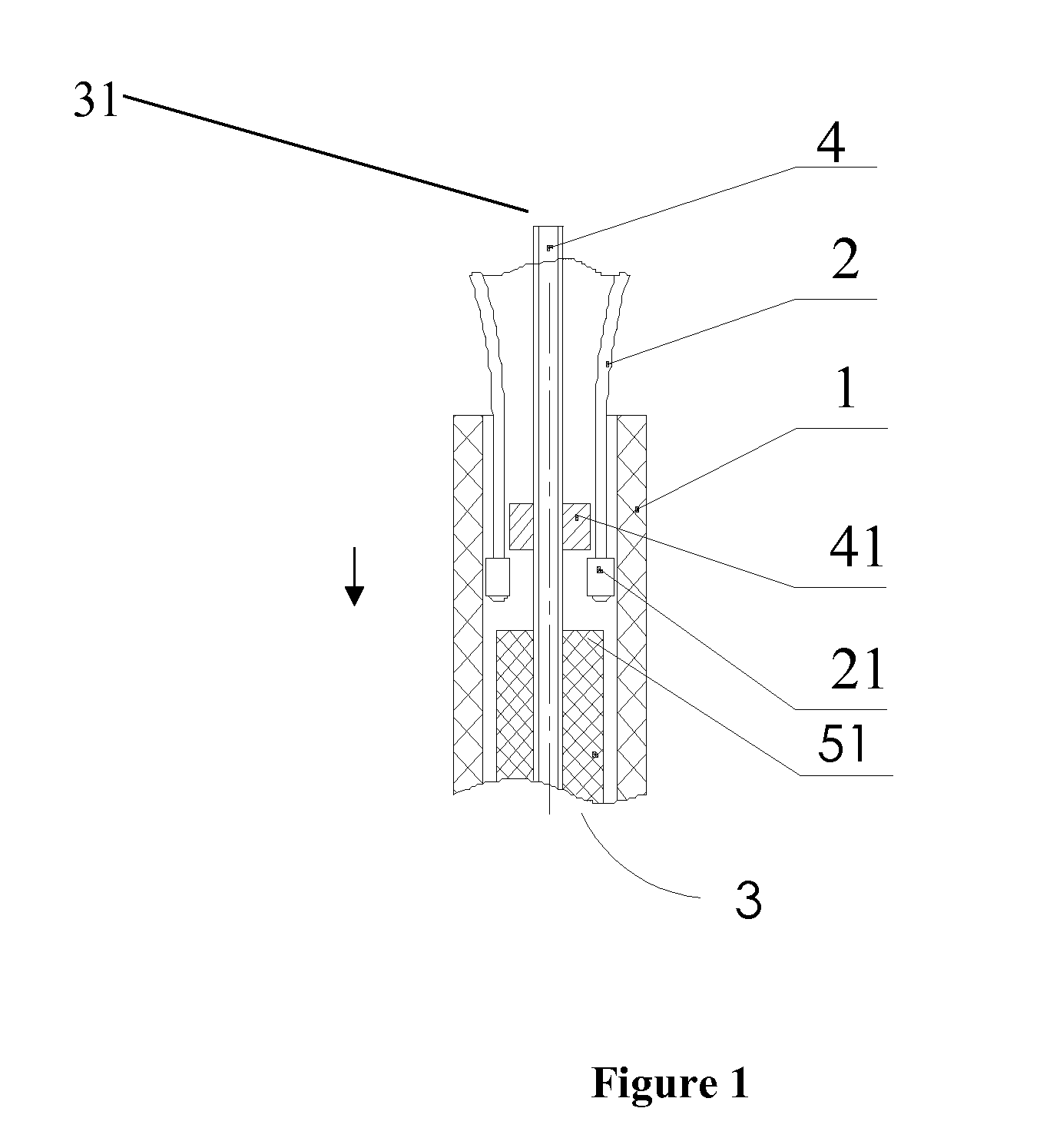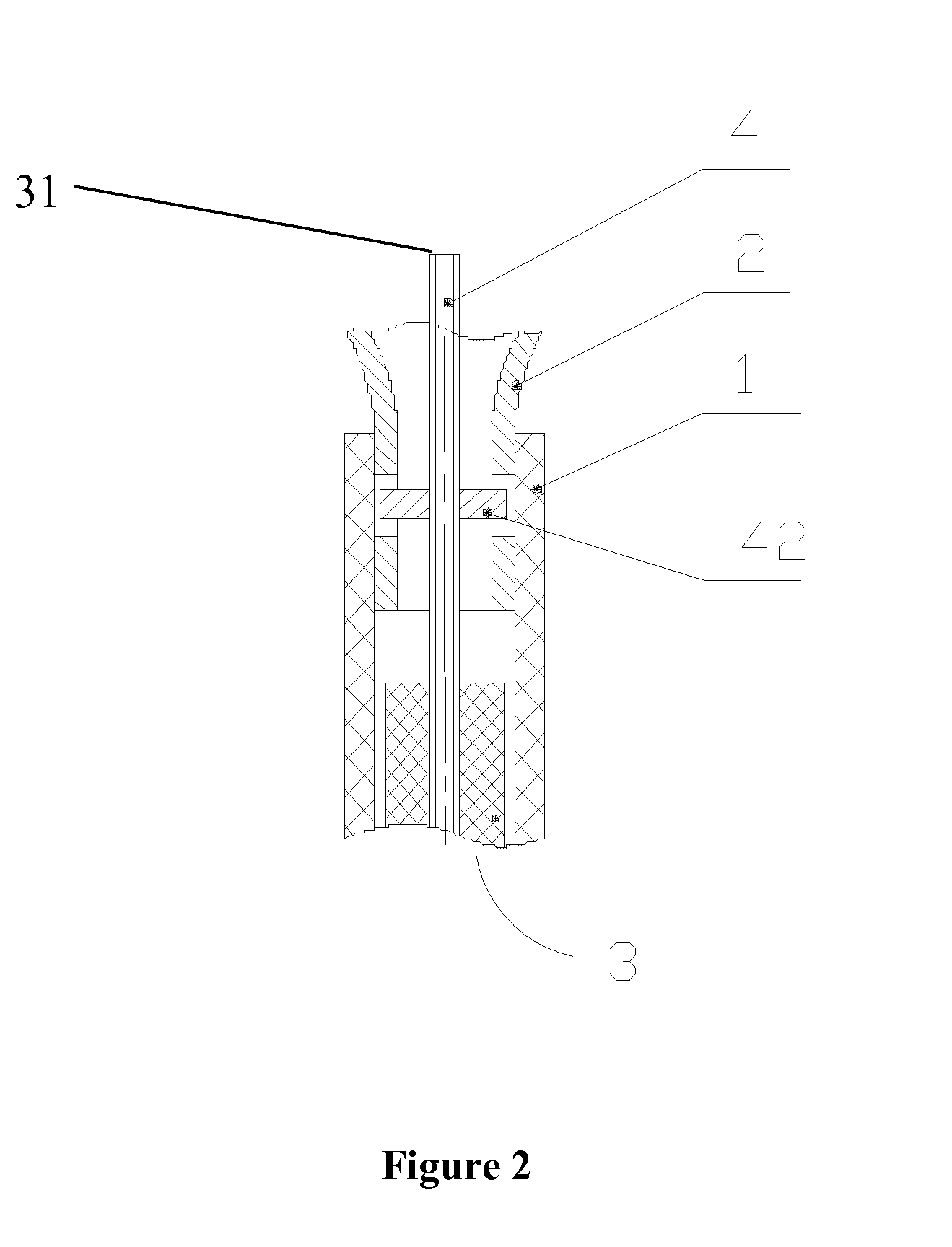Delivery apparatus for a retractable self expanding neurovascular stent
a delivery apparatus and self-expansion technology, applied in the field of neurovascular stent delivery apparatus, can solve the problems of inability to get the blood (and oxygen) the brain needs, affecting the safety of balloon-expansion stents, and affecting the safety of stents. the effect of tracking
- Summary
- Abstract
- Description
- Claims
- Application Information
AI Technical Summary
Benefits of technology
Problems solved by technology
Method used
Image
Examples
Embodiment Construction
[0046]As is used herein, the terms “about” or “approximate” when used to describe the dimensions of the described device mean that the size of the device need not be precisely the dimensions described. Those of skill in the art will understand from this disclosure how to design embodiments of the invention with varied dimensions. Such is within the spirit of this current invention.
[0047]FIG. 1 and FIG. 2 illustrate two exemplary embodiments of a neurovascular self expanding stent delivery apparatus of the current invention. In FIG. 1 there is seen a distal section 4 and a middle section 3 of an inner shaft 31. Attached to the inner shaft 31 there is a first blocking member 41. FIG. 3 is partial exploded views of the distal end of the inner shaft 31, wherein the blocking member 41 is a disc-shape disposed on the inner shaft. Returning to FIG. 1, the larger outer diameter of the middle section 3 of inner shaft 31 compared to the outer diameter of the distal section 4 provides a second...
PUM
 Login to View More
Login to View More Abstract
Description
Claims
Application Information
 Login to View More
Login to View More - R&D
- Intellectual Property
- Life Sciences
- Materials
- Tech Scout
- Unparalleled Data Quality
- Higher Quality Content
- 60% Fewer Hallucinations
Browse by: Latest US Patents, China's latest patents, Technical Efficacy Thesaurus, Application Domain, Technology Topic, Popular Technical Reports.
© 2025 PatSnap. All rights reserved.Legal|Privacy policy|Modern Slavery Act Transparency Statement|Sitemap|About US| Contact US: help@patsnap.com



